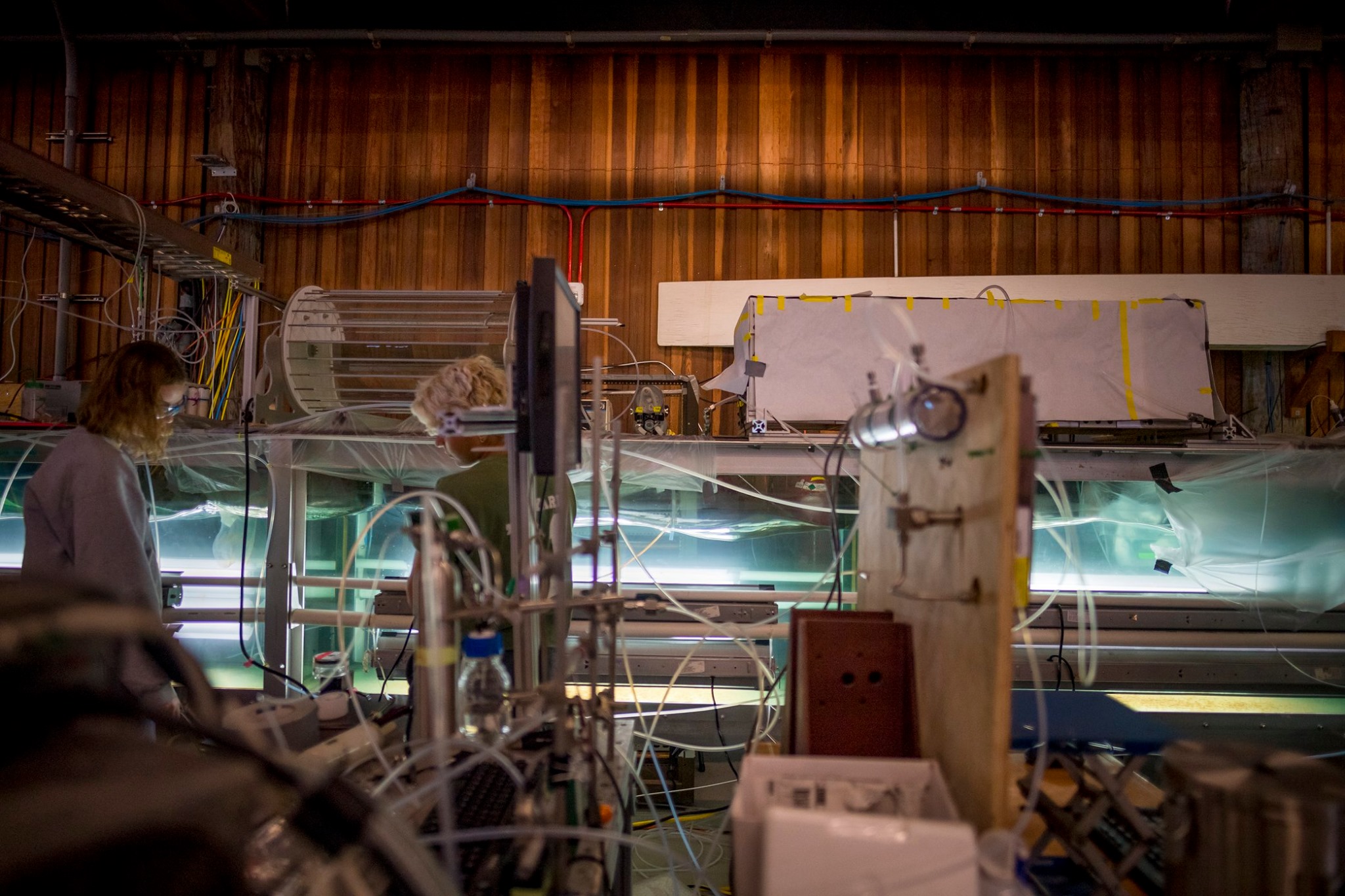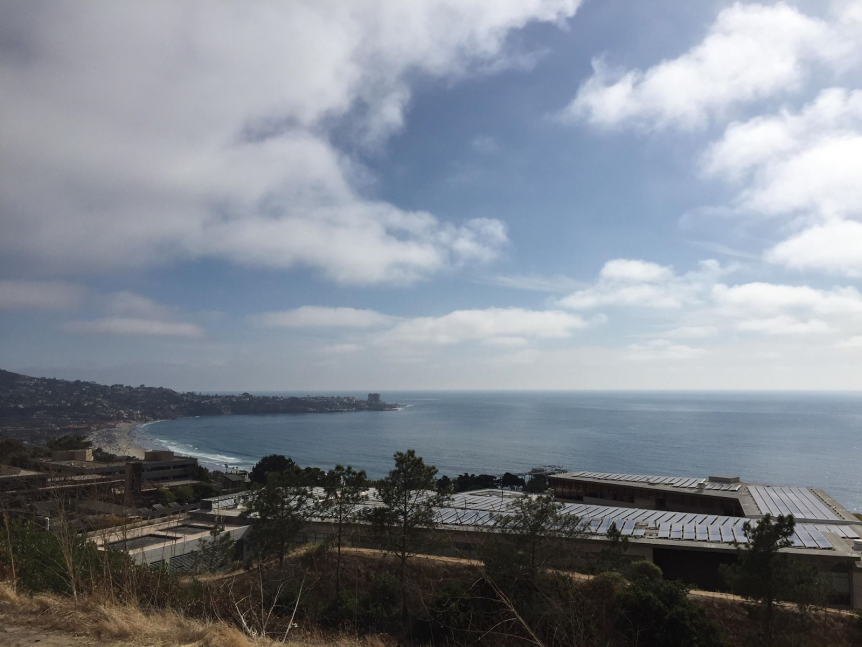If you’ve never read the whimsically titled Tale of Two Blooms paper that covered key findings from the IMPACTS (Investigation in Marine PArticle Chemistry and Transfer Science) wave flume campaign CAICE undertook five years ago, do yourself a favor and look through it. For an undergraduate like me, the article was recommended reading for the Summer Undergraduate Research Program, so I took a look at it on a slow day at my lab back home. I found myself in admiration of the scope of the project, amazed by the rich variety of data collected, and overwhelmed by how densely packed the article was with information. To me, it almost seemed like all the bits and pieces of IMPACTS fell together perfectly and produced this paper. I went into SeaSCAPE expecting smooth sailing.
Of course, any researcher knows better.

on the sizing instruments. Photo: Erik Jepsen / UC San Diego Publications
Indeed, I’ve come to understand what Gil Nathanson, my PI back home, meant when he talked about being “exposed to many of the agonies and ecstasies of research.” This story begins with “Sizing Island”, a dense cluster of fifteen or so instruments located near the wave flume’s sampling ports. On this Island you can find multiple SMPS (Scanning Mobility Particle Sizers), APS (Aerodynamic Particle Sizers), and CCN (Cloud Condensation Nuclei) Counters. The SMPS and APS together can size particles ranging between 3 nm and 10 μm, while the CCN counters gauge how well water condenses onto aerosol particles, a process that governs cloud formation in the atmosphere. Not all aerosols can act as cloud condensation nuclei, and their activity is governed by both their size and composition. These characteristics can then impact cloud properties such as their lifetime and ability to reflect incoming radiation (also known as albedo). These measurements are important as aerosol impact on cloud formation is one of the largest uncertainties in our understanding of climate change.
One of our main tasks is performing daily maintenance checks on these instruments, which includes making sure the instruments are pulling the correct flow rates or leak testing the instruments, as well as changing the silica gel dryers that dessicate aerosols from the wave flume. These checks keep Sizing Island running smoothly and allow us to identify any instruments that may need troubleshooting to generate the best measurements possible.

near the the Secondary Marine Aerosol Dome 2.0. Photo: Erik Jepsen/UC San Diego Publications
To muddy the waters further, we sample three different forms of aerosols. First, in our nascent aerosol line we are sampling aerosols in real time directly from the headspace of the wave channel in order to reduce the effects of any secondary processes. In our heterogenous aerosol line, we take nascent aerosols and gaseous molecules partitioning off the water and oxidize them in an Oxidative Flow Reactor, which simulates aging of particles in the atmosphere by •OH radicals. Finally, our secondary marine aerosol line solely samples gases partitioning off the water inside a dome and oxidizes them in another Oxidative Flow Reactor. Oxidized gases aggregate and condense to form “secondary marine aerosols”. We size all three of these aerosol types, allowing us to compare and contrast their size distributions, as well as see how these distributions change as biological activity in the flume swells and wanes. The CCN counters also take in these aerosols, which lets us study the ability of these different forms of aerosols to act as cloud nuclei for forming cloud droplets.
Did you get all of that? It’s gonna be on the test next week. But back to those “agonies and ecstasies.” It took a lot of trial and error to get used to performing the dozens of maintenance checks we’re in charge of, as well as multiple drafts for our standard operating procedures. We’ve come a long way from being lost among a sea of instruments to keeping watch over Sizing Island. Of course, there are still hiccups, like when instruments malfunction or when data logging programs crash, but we can’t expect everything to run perfectly all the time. I like to think of our experience working on Sizing Island as a microcosm of SeaSCAPE as a whole: iterative troubleshooting has created successes out of woes. Just as we’ve gone through various approaches to maintenance, the wave flume has gone through multiple fillings, each with its own quirks. We rinse and repeat (literally, in the wave flume’s case!), and step closer day by day to a better understanding of the chemistry and biology of sea spray.
We would like to end by sending a special thank you to our mentors Kathryn Mayer and Chris Cappa who shared their knowledge with us and provided their guidance throughout this summer experiment. We would also like to acknowledge Kim Prather, CAICE, and NSF for the opportunity to contribute to this experiment and learn from our experiences here at SeaSCAPE.
Written by: Chi-Min Ni, Undergraduate Student, UW-Madison
Catherine Mullenmeister, Undergraduate Student, UC San Diego
Cristina Bahaveolos, Undergraduate Student, UW-Madison

